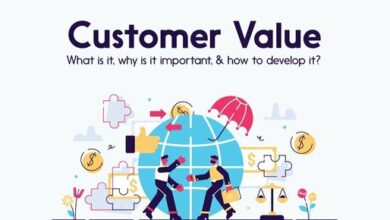7 Predictions for the IT Industry In 2023

7 Predictions for the IT Industry in 2023. What trends will dominate the IT industry in 2023? These include the outsourcing of IT professionals, the development of cloud-based tools and platforms, the growing popularity of solutions in the spirit of a composable approach or headless e-commerce.
These issues have one thing in common – the desire to build competitive advantage while at the same time adopting a policy of belt-tightening. Keep reading to learn more about technology trends and challenges that tech sector will face in 2023.
7 Predictions for the IT Industry In 2023
In this article, you can know about 7 Predictions for the IT Industry In 2023 here are the details below;
- Spending on the IT industry is rising, but the financial crisis is also causing increased anxiety
- Employee outsourcing is a recipe for talent shortage in IT
- SaaS or PaaS enables effective management of a company’s IT ecosystem
- No-code and low-code will revolutionise the app market
- Enterprise technology going away?
- Headless e-commerce supports retailers in building the shopping experience
- Cybersecurity is still one of the biggest challenges for IT
According to estimates by the Gartner Institute, we can expect more than 5 per cent growth in IT spending in 2023 . In a global perspective, they are expected to reach as much as $4.6 trillion.
Rising spending does not translate into optimistic sentiment among IT professionals . According to a survey commissioned by DataArt, as many as 43 per cent of programmers surveyed fear the effects of the coming financial crisis. Almost one in five programmers interviewed are significantly afraid of it.
Both the COVID pandemic and the ongoing war in Ukraine have left their influence on the global economy. We live in uncertain times, and while the market for new technologies is accelerating, it is the aforementioned economic instability that dictates many of the tech trends and challenges for the year ahead.
Outsourcing IT specialists as a solution to staff shortages
New technologies are making inroads. Today, as never before, we need talented IT employees to tackle industry challenges. Meanwhile, we still suffer from a shortage of marketable talent. Recruitment is therefore becoming an increasingly costly challenge. This is forcing a change in the approach to recruiting and building IT departments. Also check How To Avoid Influences with Fake Followers
In 2023, outsourcing software developers will remain in vogue. At The Codest, we are already seeing a growing interest in the services of our professionals who serve as support for our clients’ internal IT departments. Whether they need a team of specialists on a project basis (to, for example, deliver new website or mobile app functionality) or in a support model, as part of an open contract.
From Saas to PaaS
The future is in the cloud and cloud services . In the coming year, companies will increasingly use more than just external IT services and employee outsourcing . Off-the-shelf, advanced tools in the cloud, in models such as: Forum as a Service (PaaS) & Software as a Service (SaaS) – i.e. software as a service and platform as a service.
According to the findings of the report Paddle: State of SaaS 2022: A Meta Report in 2021, organisations have increased spending on SaaS software by more than half. The investment in the aforementioned tools gives organisations more and more opportunities to manage the company’s IT ecosystem by smaller and smaller teams. This is important in the context of the aforementioned IT recruitment issues. Not to mention a number of additional benefits such as cost optimisation, flexibility, time savings or scalability.
No-code and low-code
These are two concepts that experts predict will mean a real revolution for the IT industry. No-code and low-code platforms make it possible to create applications without (or with minimal) programmers. This means, therefore, a solution to two of the biggest industry challenges of the coming year – labor shortages in the IT industry, as well as limited budgets.
Of course, no-code and low-code platforms will not drive programmers out of the market. Let’s remember that they are rather aimed at facilitating and speeding up the process of designing simple software for people without specialist skills. Let us, after all, leave the creation of advanced applications with a wide range of functionalities to professionals. Also check types of meetings
We are breaking down into smaller (solutions)
Enterprise-class technologies are a natural step for business growth. However, their popularity may be in question in these uncertain times. The last year has shown the uncertainty of decision-makers in the space of spending on large, complex solutions. We have it in the back of our minds that the large facilities of such solutions mean significant costs: both start-up, but also maintenance and development costs.
In 2023, therefore, we will look more willingly and favourably at smaller solutions targeted at specific business needs. In the spirit of the so-called composable approach, we will be looking for smaller, cheaper and often even free tools. All with the aim of creating a tailor-made whole from the component parts to suit our business and capabilities.
Losing our heads for headless e-commerce
Modern front-end solutions that remove the constraints of digital experience design in the UX and UI space will be in trend next year. The enterprise solutions already mentioned here used to ‘impose’ limitations on the ability to expose digital assumptions. Today, the solution comes in the form of headless platforms – a space where companies can actually express brand objectives in a way that allows them to benefit from new digital trends.
Headless e-commerce , a tool that allows the separation of the front-end from the back-end of the shop, translates into many positive changes for site owners. Among the advantages of headless platforms, where the front-end and back-end are not dependent on each other, are their high flexibility, the ability to react faster, as well as to make changes more quickly, the chance for ongoing optimisation or personalisation.
Data security
Cyber security is a topic that has appeared in annual industry summaries for many years. Increased hacker activity, massive attacks crippling IT infrastructure, theft and phishing attempts make cyber security an ongoing challenge for everyone, globally.
The problem of protecting against attacks has become even more apparent since the outbreak of the pandemic and the massive shift to remote and cloud working. It is also the aftermath of the huge popularity of the Internet of Things. The vulnerabilities and ‘gateways’ through which confidential and sensitive data can easily be stolen have increased dramatically.
The next year will therefore bring an even greater need for skilled cyber security professionals to all companies, not just the largest. The human factor will also be supported in this issue by artificial intelligence (AI). Artificial intelligence is able to process huge amounts of data, pinpointing and recognising potential threats.
Digital transformation is inevitable
Organisations around the world are arming themselves with new technologies. Digital transformation is in full swing. However, in times of economic instability, it is becoming increasingly difficult to build a competitive advantage. This requires a great deal of creativity in these times, but also an openness to different, often non-trivial technologies.



